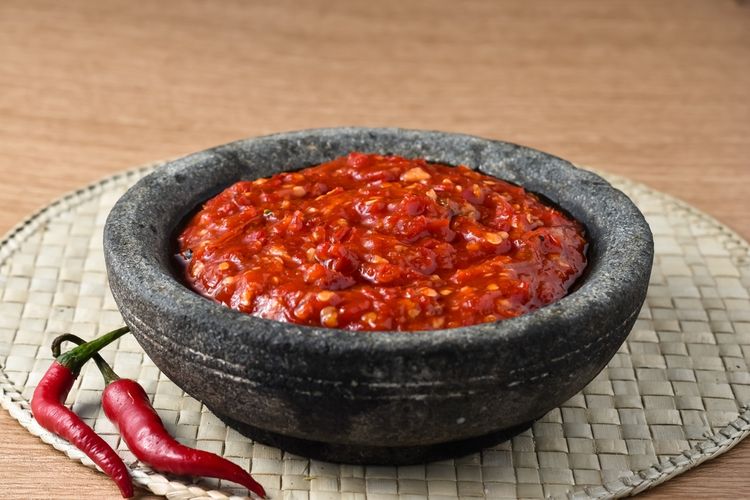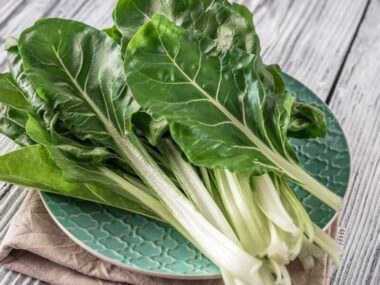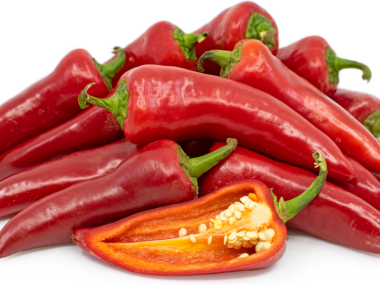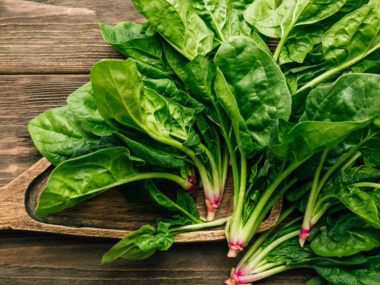Sambal is a spicy condiment that is often used in Indonesian, Malaysian, and other Southeast Asian cuisines. It’s made primarily from chili peppers, along with ingredients like garlic, ginger, lime juice, and vinegar. The sauce brings heat, tang, and depth to dishes, making it a favorite in many kitchens around the world.
However, finding sambal outside of Southeast Asia or specialty stores can sometimes be a challenge. When you’re in a pinch and need to replace sambal, there are many other ingredients that can provide similar flavors.
The key to a good substitute for sambal is finding something that offers both heat and tang, without losing the complexity that sambal brings. While no substitute will exactly match its unique taste, you can find alternatives that will work well in various recipes. In this post, we’ll explore 13 substitutes for sambal, explaining how each one can bring the right flavors to your cooking.
13 Substitute For Sambal
1. Sriracha

Sriracha is probably the most popular hot sauce in many households and a great alternative to sambal. It’s made with chili peppers, vinegar, garlic, sugar, and salt, giving it a balance of heat and sweetness. The tangy flavor of vinegar in sriracha mimics the sour element found in sambal.
Although sriracha is slightly smoother and more processed, it works well in many of the same dishes. Use sriracha as a 1:1 replacement in recipes where sambal is called for, but if you prefer more heat, feel free to add a pinch of crushed red pepper or fresh chilies.
2. Chili Garlic Sauce

Chili garlic sauce is another excellent option. Like sambal, it contains chili peppers and garlic, with a texture that’s chunky and rustic. The sauce is a bit spicier than sriracha and doesn’t have the sweetness that sriracha brings, making it a closer match to sambal.
The fresh, sharp taste of garlic is prominent, which can enhance the flavor of stir-fries, noodles, or dipping sauces. If you want a substitute with a little more complexity, chili garlic sauce is a strong contender.
3. Harissa

Harissa is a chili paste that originates from North Africa, but it shares many of the same characteristics as sambal. Made with roasted red peppers, hot chili peppers, garlic, and various spices, harissa offers both heat and deep, smoky flavors.
It also has a similar consistency to sambal, which is helpful when using it in recipes that require a thick sauce. While harissa might have a slightly different spice profile, it can add complexity and a rich taste to your dishes.
Read also, Best Substitute For Habanero Pepper
4. Gochujang
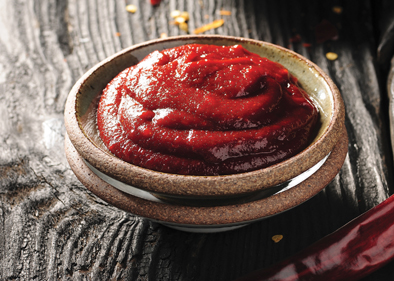
Gochujang is a Korean fermented chili paste that can be a solid substitute for sambal. It’s made from red chili powder, sticky rice, fermented soybeans, and salt, which gives it a deep umami flavor along with its heat. The paste is slightly sweet and has a thick, sticky texture, which makes it perfect for marinades and sauces.
Gochujang is less vinegary than sambal, so you may want to add a splash of vinegar or lime juice to balance the flavor when using it as a substitute.
5. Crushed Red Pepper Flakes

If you’re looking for a simple, no-fuss alternative, crushed red pepper flakes can work in place of sambal. While they won’t provide the same depth of flavor or texture, they do bring heat to a dish.
You can enhance the flavor of crushed red pepper flakes by adding a little garlic, vinegar, and a pinch of sugar, replicating some of the key elements in sambal. This mixture won’t be as saucy, but it will add a spicy kick to your food.
6. Tabasco Sauce

Tabasco sauce is a well-known hot sauce made from tabasco peppers, vinegar, and salt. Its tangy, spicy flavor makes it a decent substitute for sambal, especially in recipes that need a bit of a vinegar punch.
The consistency of Tabasco sauce is much thinner, so it may not work in every dish where you need a thicker paste. Still, the bold heat and sourness it brings can elevate soups, stews, and stir-fry dishes. Use it sparingly, as it is quite potent.
7. Thai Chili Paste
:max_bytes(150000):strip_icc()/20210928-nam-prik-pao-thai-chile-jam-vicky-wasik-20-65abb24737024264932b1930b863f04f.jpg)
Thai chili paste, often known as nam prik pao, is another excellent substitute for sambal. Made from roasted chilies, shrimp paste, and various seasonings, this paste has a sweet, smoky, and slightly funky flavor. The heat level can vary, but it usually packs a punch similar to sambal.
Thai chili paste can be used in soups, stir-fries, or even as a dipping sauce, just like sambal. Its slightly sweeter taste can bring a different flavor to your dish, but it’s a great alternative for those who love complex, spicy sauces.
8. Peri-Peri Sauce

Peri-peri sauce, originating from Portuguese and African cuisine, is made from African bird’s eye chili, garlic, lemon, vinegar, and spices. This sauce is tangy, spicy, and slightly smoky, making it a solid stand-in for sambal.
Peri-peri sauce can be used in marinades, dressings, or on grilled meats. Its bright, citrusy flavor works well in dishes that call for sambal, although it may be slightly more acidic. Like sambal, peri-peri sauce can also be adjusted to suit your heat tolerance.
Read also, 10 Best Substitutes For Espellete Pepper
9. Cayenne Pepper Paste
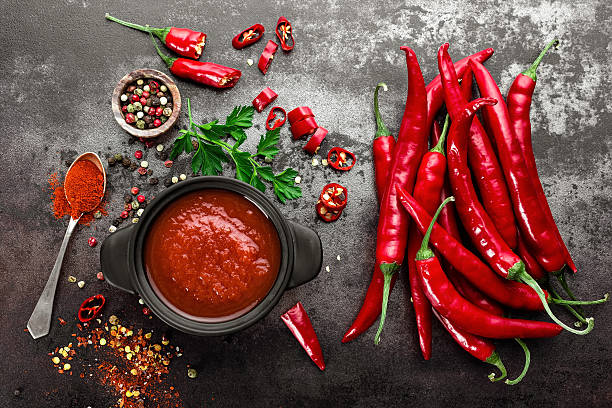
Cayenne pepper paste is a simple, straightforward alternative that can match the heat of sambal. You can make this paste by mixing cayenne pepper powder with a little vinegar and oil to create a thick, spicy sauce.
While cayenne pepper doesn’t have the garlic or the deep complexity of sambal, it brings a similar level of heat. If you’re looking for a substitute that leans more into the spicy side of sambal, cayenne pepper paste is a good choice.
10. Sri Lankan Chili Paste

Sri Lankan chili paste, known for its bold flavors and spicy kick, is made with chili peppers, garlic, and vinegar, similar to sambal. The paste is often used in Sri Lankan cooking to bring heat and depth to curries and stir-fries.
This chili paste has a stronger, more roasted flavor compared to sambal, but the heat level is comparable. You can use it as a sambal substitute in dishes where you want that extra depth and a bit of smoky flavor.
11. Homemade Sambal

If you can’t find sambal at the store, why not try making your own? Sambal is fairly easy to make at home, and you can adjust the ingredients to your liking. The basic recipe includes red chilies, garlic, vinegar, and salt, which you can blend together into a paste.
You can also add other ingredients like ginger, lime juice, and a little sugar to create your perfect version of sambal. Homemade sambal will give you the closest match to store-bought varieties, allowing you to control the spice and flavor profile.
12. Chipotle Peppers in Adobo Sauce
:max_bytes(150000):strip_icc()/__opt__aboutcom__coeus__resources__content_migration__serious_eats__seriouseats.com__images__2015__04__20150424-chipotle-peppers-adobo-vicky-wasik2-ffcb8c68148947a49cbb705666c54769.jpg)
Chipotle peppers in adobo sauce are a Mexican alternative that brings both heat and smoky flavor to dishes. Chipotle peppers are smoked jalapeños, and when they’re packed in adobo sauce, they take on a tangy, spicy character.
The smokiness of chipotle peppers is quite different from sambal, but it can add a rich depth of flavor to stews, soups, and grilled meats. If you’re okay with a bit of smokiness in your dishes, this can be a great swap.
13. Pepperoncini Peppers
:max_bytes(150000):strip_icc()/Peppers_0011_preview-ec0dc33f96d8477b9b154ec5d16b506c.jpg)
For a milder option, you can use pepperoncini peppers. These pickled, slightly tangy peppers have a bit of spice but are much less intense than sambal. Pepperoncini can work in recipes where you need a bit of heat and acidity, but they won’t bring the same depth as sambal.
You can chop them finely and mix them with garlic and a little chili powder to mimic some of sambal’s qualities. While this substitute won’t pack as much of a punch, it’s a suitable option for those who prefer a milder heat level.
Conclusion
While sambal is unique in its flavor, texture, and heat, there are plenty of substitutes that can get the job done in your recipes. Whether you prefer the smooth tang of sriracha, the robust spice of harissa, or the smoky heat of chipotle peppers, each of these alternatives brings something different to the table. When substituting for sambal, it’s important to keep in mind the balance of heat, tang, and texture in your dish. Feel free to experiment with these substitutes to find the one that works best for your cooking style and preferences.
